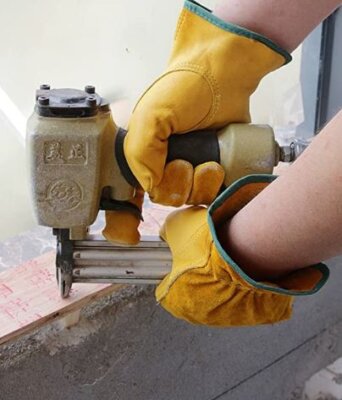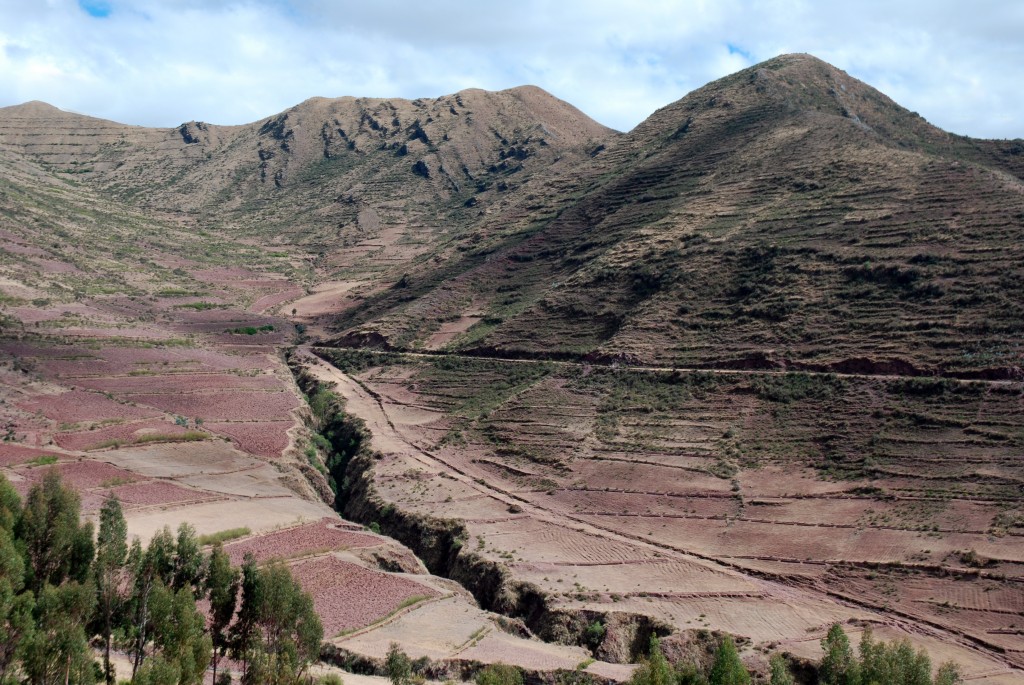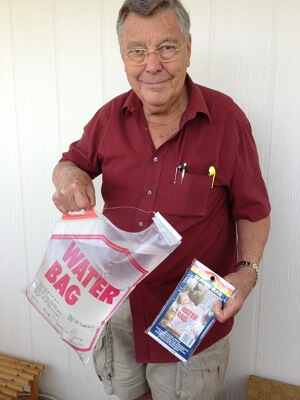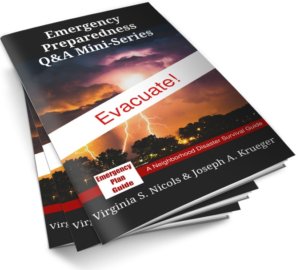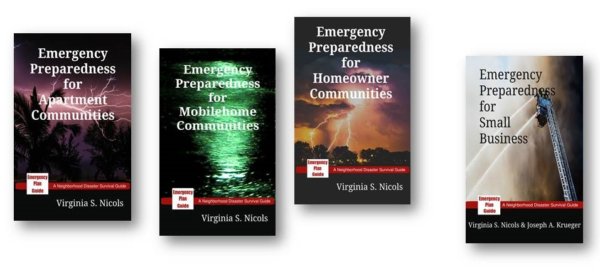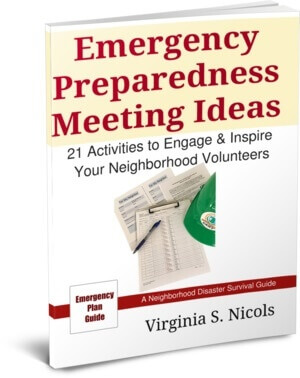School Preparedness for 2023 — Questions for Parents

You may know I’m an elementary school crossing guard. Last year, as the news of the Uvalde school shooting poured out of the TV, Joe and I immediately started talking about security at my school. That same afternoon, as I headed out to my corner, I was thinking:
- Would I notice if someone walked into the school carrying a gun?
- Would I be a target for a shooter or a vehicle, standing out there in the middle of the street in my bright green vest?
These same thoughts pass though my brain every day that I’m on the job. . .
Emergency Plan Guide’s Annual List of School Preparedness Questions for Parents
For the past few years, I’ve put out a list of questions for parents and caregivers regarding school security. This year, it seems even more vital. Uvalde prompted me to do more and more research. I continue to attend webinars on the topic and just a month ago watched a comprehensive school safety meeting put on by my own school district.
As a result, in 2023 I have had to add about 25% more to my list of questions on school preparedness.
For example, the list of potential emergencies now has to include the usual fire and storm, but also school shootings (so far, down from over 50 last year – but still, FIFTY of them?!). We can’t overlook tornados, flooding, dangerous air quality, wildfires, and threats from train wrecks. Other school problems fit the emergency category, too: bullying, drugs, and sexual abuse.
Some of these emergencies may be rare. Many may arise without warning. But not one of them should be totally unexpected.
Of course, every school is unique – not to mention every student! – so not all schools will prepare for all possible threats. Nor does Emergency Plan Guide provide guidelines for handling all possible situations. But we can ask pertinent questions – and hope you will find the answers that fit.
Be Aware: School personnel may be hesitant to answer some of these questions.
Security professionals may not want to share details out of concern for confidentiality and security. Counselors and teachers may be uncomfortable with preparedness issues in general. (“Why focus on what could go wrong? Why scare the children?”) And it’s possible no one in the room knows the answers.
But remember, your taxes pay for schools, teachers and security, so don’t be intimidated if you feel good answers are not forthcoming. Patience and persistence will pay off!
Also remember this. School staff members may not consider themselves “First Responders,” but when something happens, they are the first ones there. Their actions can keep an emergency from turning into a disaster. So support your school staff in getting more support and training.
Preparedness Questions to Ask the School in 2023
General school emergency policies
- Which emergencies are we planning for here in our school, in 2023?
- Who sets policies regarding emergencies? It’s likely that your school district has district-wide policies, set by professionals. For these policies to be effective the professionals will need input from everyone concerned: school board, staff, students, parents, etc. Find out how you can give input; know what info your school board can share, and what it can’t.
- How do parents find out about current safety and emergency procedures and policies? As part of registration packet? Through a school newsletter or email newsletter? Special meetings?
- How are emergency contact forms distributed? Where kept? How detailed? How often are they updated? Who has access? Is contact information accessible if the school office is closed?
- What are alternative pick-up locations if school has been closed? How will parents be notified? Who can pick up your child if school is shut down? How will the alternative pick-up person be notified? How will they be identified before your child is released? What happens to children who are not picked up?
- How are First Responders notified of an emergency? How will parents be notified? Phone call? Text? From whom? Your school’s safety plan ought to include public communications (some prepared and “on the shelf”) for disaster prevention, during an incident, and afterwards.
- How to report emergency concerns? Your school should have a policy that allows parents – or crossing guards, for that matter – to safely report on what might be sensitive issues.
Emergency drills
- Does the school face any particular threats because of its location that would suggest a need for an evacuation drill? Near railroad tracks, busy traffic or airport, environmental hazards from neighboring businesses, potential for landslides, etc.?
- Does the school hold active shooter drills? (Many schools are now calling these Violent Intruder Drills.) While 95% of schools do hold these trainings, recent research suggests that they are causing emotional and physical harm to the school community. Find out what’s happening at YOUR school!
- Does the school train for natural emergencies like tornado, earthquake or storm, as well as fire?
- Are students with disabilities included in all drills?
- How are drills scheduled and what should parents know about them in advance?
- Who does the training for drills?
- How are substitute teachers, staff, maintenance, bus drivers, crossing guards, etc. included in these drills?
Emergency supplies and equipment
- What emergency food and water supplies are maintained in the school?
- What supplies are kept on school buses in case of a breakdown or delay?
- What food, water and hygiene supplies are in the classroom in case of extended lockdown?
- What first aid supplies are available? Who gets training?
- What emergency equipment is available? (fire extinguishers, AEDs, wheel chairs, rope ladders from second floor, etc.) Who gets training?
Security features
In just the past two years my school, like many others, has made significant changes to its physical infrastructure to provide more security: fences, gates, and more lighting. Have any changes been made at your local school over the summer? You and your children should know what to expect when you come back to school.
- Does the school have security cameras? How are they monitored?
- Has the school made any changes to the way visitors are allowed onto the campus or into the buildings? Badges? Sign in, sign out?
- What procedures does the school follow when it comes to locking doors and gates?
- Does the school have an on-site security force or resource officer? How many officers with what training and what weapons? Their role?
Parent response in case of an emergency
In any emergency, a parent’s first instinct is to rush to their child’s defense. This is probably the WORST response to an emergency! We have all watched as cars and parents swarm a school, hindering law enforcement and emergency activities.
Campus Safety recommends the following safety protocols for parents.
Does your school recommend them, too?
- Do not call or text your student.
- Do not rush to the school.
- Do not call the school.
- Have updated emergency contact information.
- Be aware of reunification processes.
Getting back to business as usual
Sometimes it’s easier to focus on immediate protective actions and overlook what it will take to recover once an event is over. A good preparedness plan will have procedures in place to help parents and students prepare for an emergency, manage the emergency, and cope with the emergency when it’s over.
Depending on the age of the students, such “getting back to business” activities might include moving to a new school location altogether, receiving professional and peer counseling, involving students in school facility clean-up or upgrade activities, performing new building safety inspections, holding memorials, acknowledging First Responders, etc. Does your school have plans and/or policies for any of these?
Preparedness Questions to Ask Yourself
Today, many children never have the opportunity to wander alone, build a tree house in the backyard, or bike 3 miles to visit a friend. From a physical resilience standpoint, they may be far less capable than were children of earlier generations. It’s up to parents to make sure kids are as ready as they can be for everyday as well as once-in-a-lifetime emergencies.
Here are some questions to ask yourself about your children’s readiness this year.
Everyday emergency conversations
- What are realistic threats that your child could face, at school or on the way to or from school?
- Is your child aware of these threats, and what response might be a good one?
- Have you confirmed that your child understands emergency drills at school? (I have asked many of “my” children about drills. The younger children are often clueless about what is going on. “We went outside onto the baseball field.”)
- Have you practiced any emergency responses at home? Examples – Earthquake: drop, cover and hold on. Fire: drop and roll. Get out of the second story: Open the window, set the ladder, climb down.
- Would your child be willing to come home with a neighbor if you were not available?
- Could your child walk home alone from school, taking more than one route if the way were blocked? Can your child get home by taking the bus?
- Do you have a secondary “emergency gathering place” for your family if your home is unreachable?
- Has your child memorized key phone numbers and addresses?
Emergency supplies for children
- Does your child have an emergency kit at home, always packed and ready to go with the addition of just a couple items like a phone and charger?
- Does your child have an emergency kit for school? (Some schools require that children bring basic supplies to leave at school.) Every child could have a few basic supplies in a backpack kit: a list of contact numbers, snacks and water, wipes, first aid supplies, a jacket for warmth, a flashlight, and a good whistle. What about an emergency phone?
- Does your child understand that the school kit is ONLY for emergencies?
- Does the school allow all the items in the kit?
Next Steps for Parents and Families
How did you do in answering all the school preparedness questions for 2023?
If you haven’t been able to answer all the questions, download and make copies of this list and share it with other parents! Together, approach teachers and your school administrators for answers about school preparedness.
You may want to insist on special presentations on these emergency topics. Guest speakers could be school board members, school staff and/or members of the police or fire department. You might want meetings to be conducted in different languages. Consider volunteering yourself to help design and put on parts of the presentation to be sure it is meeting the needs of all parents.
You can hold presentations on Back-to-School night, at a PTA meeting, and, of course, in the classroom. The school or a parent could videotape the presentation, making it available online for later showing (in particular for new students coming in).
Working together, schools, students, parents, and other community members can help keep emergencies from becoming disasters. And when disasters do occur, by being prepared we have the best possible chance of keeping our students safe.
Virginia Nicols
Your Emergency Plan Guide team
P.S. The day after Uvalde my school showed increased security in the form of a police patrol car parked in the drop-off zone. I spoke to that officer. The next day I spoke to another officer. They were closed-mouthed and serious in the aftermath of Uvalde; parents arriving with their children were visibly shaken.
It’s been over a year now. No one in our school community has quite gotten over it. I’m waiting to see what new security features have been added at the school when we start again in two weeks.






